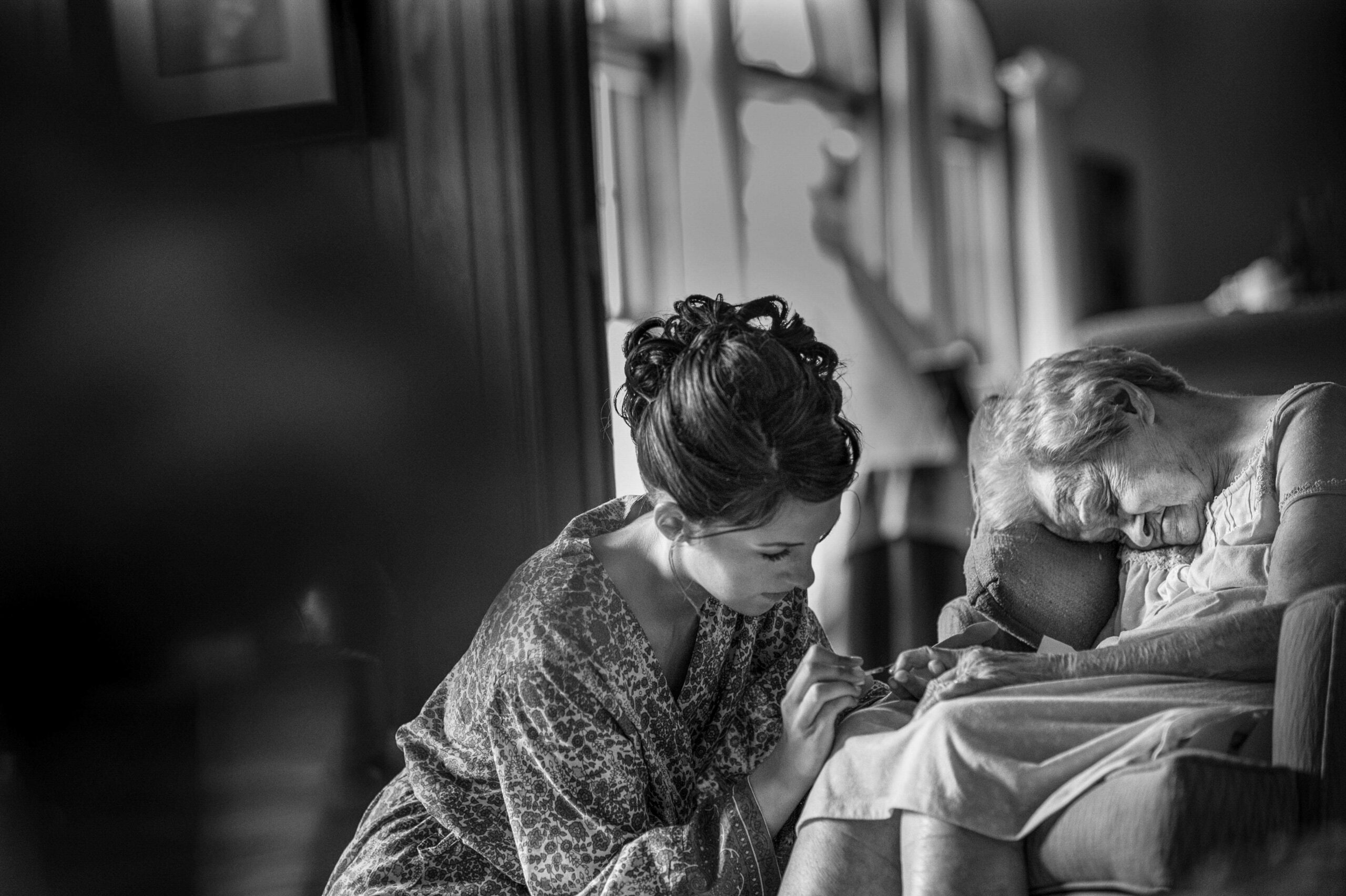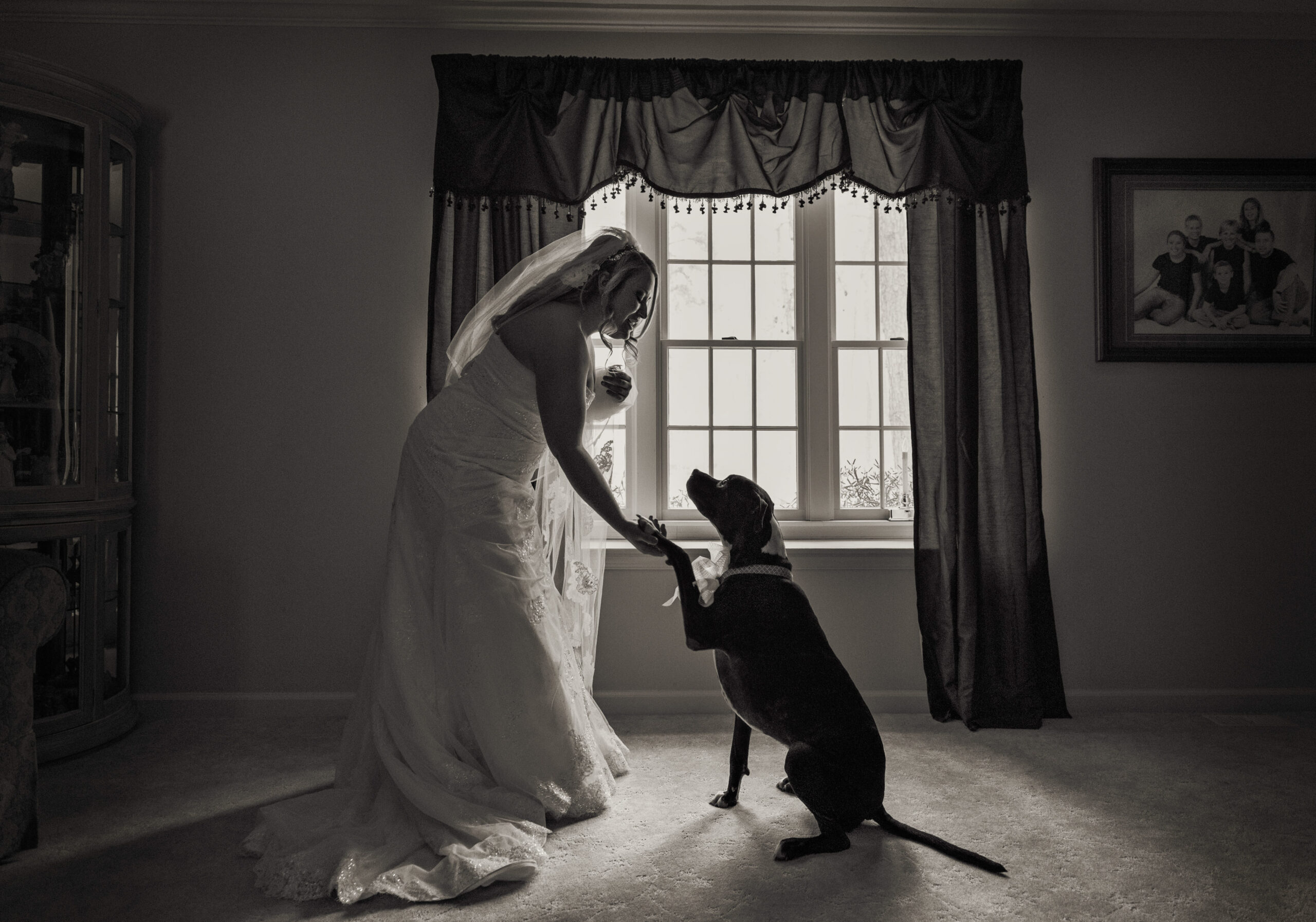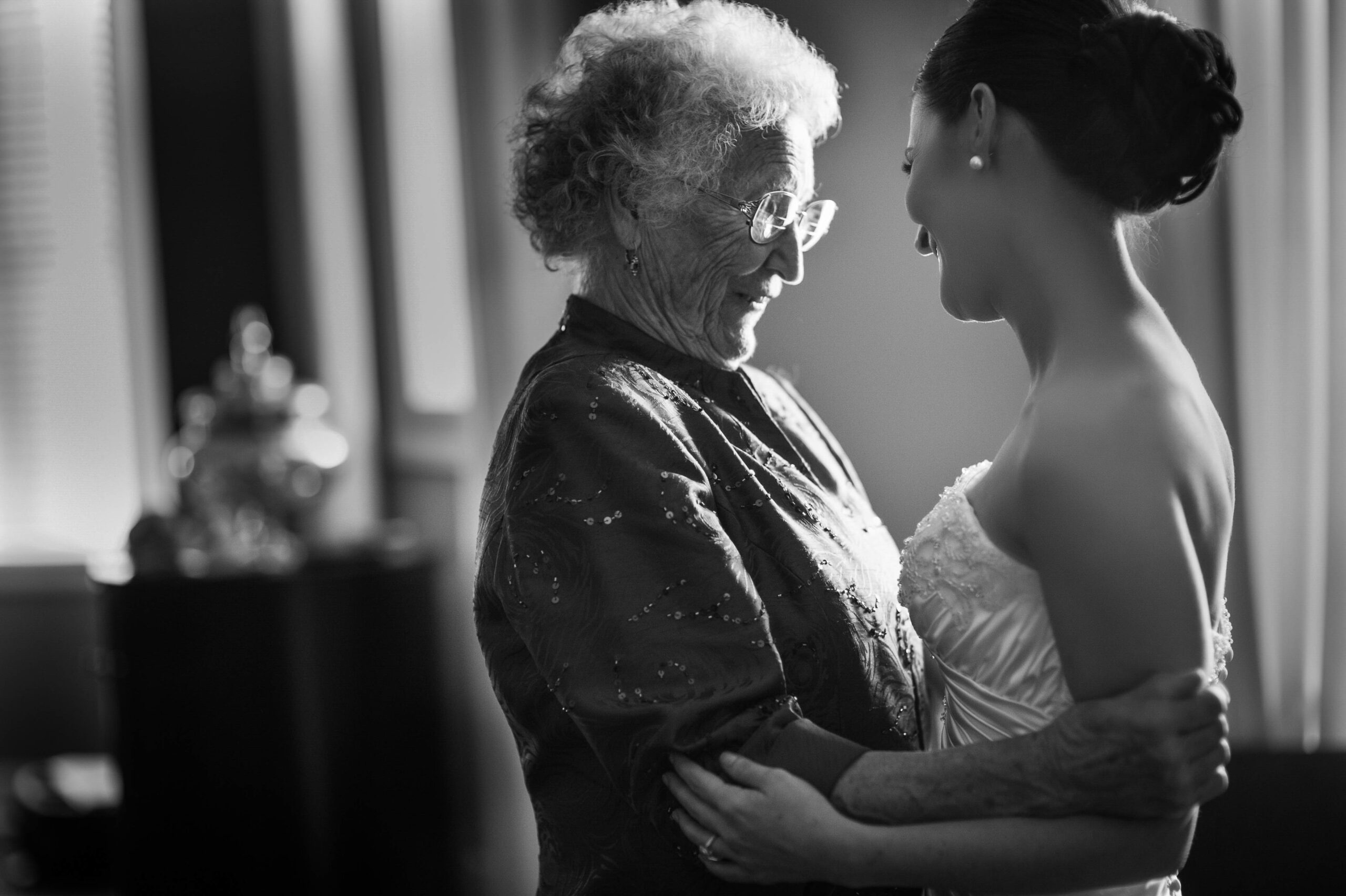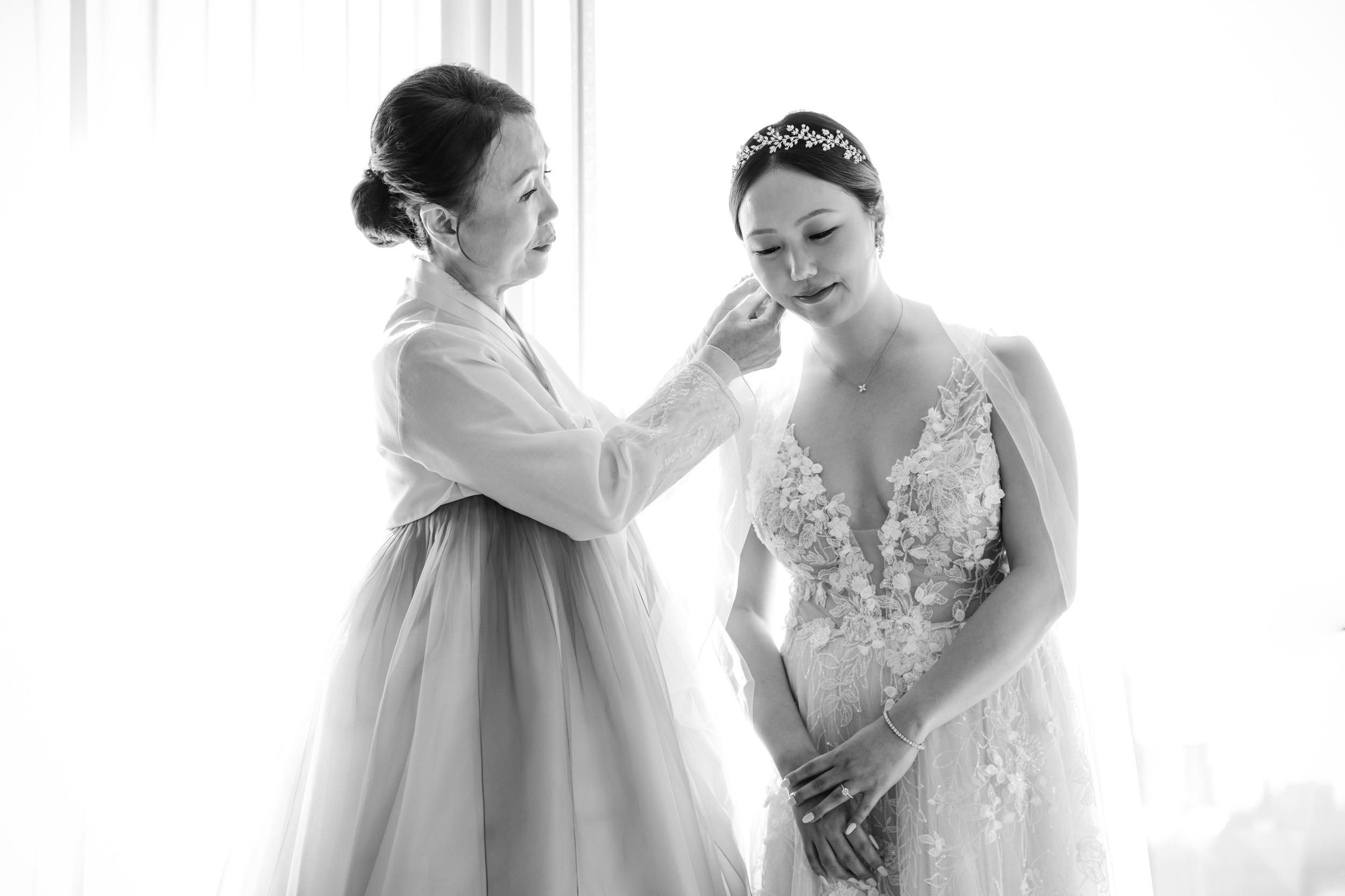If you’re planning a wedding, there’s a good chance someone’s handed you a sample timeline with “Getting Ready Photos” blocked in at the top of the day. But what does that actually mean? Do you need it? Will you regret skipping it?
Here’s the honest answer: getting ready photos aren’t essential for everyone, but they can add a lot of meaning to the story your photos tell. And most people who include this part are really glad they did.

What Getting Ready Coverage Actually Looks Like
This isn’t about endless shots of mascara wands and bowties. Getting ready coverage documents the part of the day before anything official happens—when the mood is shifting, people are arriving, and there’s a quiet buildup of energy.
Close friends or family surround you, or maybe you’re getting dressed alone and taking a minute to breathe. Perhaps you’re getting ready together. Either way, these photos ground the whole gallery. They show the before. They provide context for everything that follows. They’re the opening act to the big show. (Sorry, I tend to make everything a theatre reference!)
There’s a rhythm to this time of day that’s different from the rest. You’re moving between calm and nerves, anticipation and stillness. Moments happen that don’t happen anywhere else in the timeline.

Why This Part Matters
Most couples don’t remember much from the time spent getting ready. It goes fast. Someone’s steaming a shirt. Someone else is trying to track down a missing shoe. You’re hydrating. You’re fielding texts. And maybe you’re a little in your head about what’s about to happen.
Photos from this part of the day aren’t just aesthetic—they’re emotional. They help you see what you might have missed while you were in it. That hand on your shoulder. That laugh across the room. That quiet pause before stepping into the next chapter of your life.
They’re the calm before the ceremony, and they set the tone for the whole day.

But What If the Room’s Not Pretty?
This comes up a lot. Not everyone gets ready in a big suite or a sun-filled loft with designer furniture. That’s fine. It doesn’t need to look like a styled shoot.
I’ve worked in tiny hotel rooms, crowded Airbnbs, basements, family kitchens, and everything in between. It’s not about the space—it’s about the people in it, the light that’s there, and what’s actually happening. A cramped room with genuine emotion will always photograph better than a perfectly staged space with nothing happening.
That said, if having a clean, calm space is important to you, we can plan for that too. But it’s absolutely not a requirement for beautiful, honest images.
How Much Time Do You Really Need?
You don’t need to pad the timeline with hours. Forty-five minutes to an hour is usually plenty of time for coverage that feels full without dragging on.
In that time, I’ll document the environment, the people around you, the getting-ready process, and a few simple portraits. Nothing needs to be posed unless you want it to be. I work quietly and quickly, which helps everyone stay relaxed and in the moment.
If both people getting married want coverage, we can coordinate timing or bring in a second photographer—whatever fits best with your flow.

But What If I Don’t Want a Camera in My Face?
Totally fair. If the idea of having a photographer in the room while you’re getting ready feels overwhelming, let’s talk about that. I’m not there to direct or interfere. I’m there to observe. I can shoot from across the room, keep it low-key, and prioritize moments over details.
And if you truly want that part of the day to be private, that’s valid too. We can always start coverage with the first look or the ceremony. But don’t skip it just because you think it has to be stiff or staged. It doesn’t.
This Isn’t About Checking a Box
Many wedding traditions seem performative. Getting ready coverage doesn’t have to be one of them. It can be about presence. It can be about storytelling. It can be a way to honor the people you’ve chosen to surround yourself with—and the space you’ve created for this day to begin.
If you want to remember not just what your wedding looked like but how it felt, this part of the day helps with that.
Final Thought
When you look back at your wedding photos, the ceremony will feel formal. The portraits will feel polished. The reception will be a blur of energy. But the getting-ready time? That’s where you’ll see yourself most clearly. Still you, just before everything changes.
And that deserves to be remembered.

